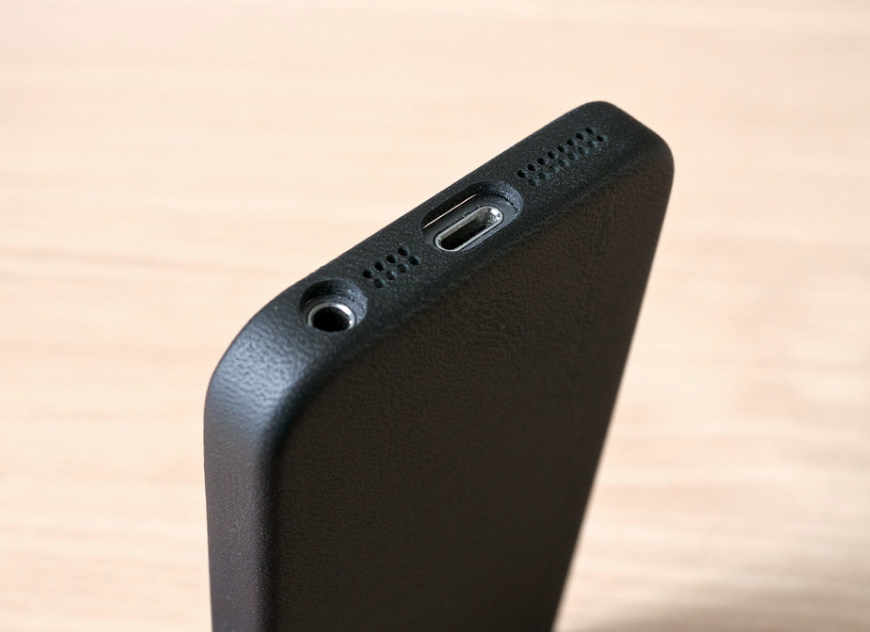
[Image above] Credit: Kārlis Dambrāns; Flickr CC BY 2.0
iPhone users may be able to “cut the cord” when it comes to the necessary chore and inconvenience of recharging their device’s battery—well, they’ll be able to use the cord less often—thanks to new technology developed by engineering researchers at Ohio State University that makes cell phone batteries last up to 30 percent longer on a single charge.
And this new technology can be built right into an iPhone case—something most of us use anyway—so it won’t be a cumbersome addition to the sleek, hand-held design we’ve grown to love and expect.
In fact, the OSU researchers are currently working with technology company Nikola Labs to develop the iPhone case technology. A Kickstarter campaign will be launched soon to help raise funds and secure the product’s place in the market.
Here’s how the tech works:
The patented circuitry developed by OSU converts some of the radio signals that emanate from a smartphone into direct current (or DC) power. That power is then fed back into the device, which helps to juice up the battery and extend the charge.
“When we communicate with a cell tower or Wi-Fi router, so much energy goes to waste,” Chi-Chih Chen, research associate professor of electrical and computer engineering at OSU, explains in a recent Phys.org article. “We recycle some of that wasted energy back into the battery.”
Robert Lee, professor of electrical and computer engineering at OSU, goes on to tell Phys.org that OSU’s invention trumps similar technology already on the market when it comes to power and efficiency.
“Other devices are trying to harvest little bits of energy from the air. Our technology is based on harvesting energy directly from the source. They can capture microwatts or even nanowatts (millionths or billionths of a watt), but cell phones need milliwatts (thousandths of a watt) or higher,” Lee explains in the article.
Lee estimates that about 97 percent of cell phone signals never reach a destination—they’re released and then just lost forever. And while it’s not possible to recapture all of these wasted signals, some can be harvested and recycled for power.
“No one can charge a cell phone from the air, but we can reduce power consumption by retrieving some of those lost milliwatts. Think of it as a battery extender rather than a charger,” Lee adds.
Energy harvesting is far from a new concept. The late 1970s ushered in the mainstream adoption of solar and wind power—and these sources of power are now widespread and still evolving.
In fact, scientists at the Georgia Institute of Technology are developing ways to harvest wasted energy from surprising sources—like the energy we produce just from tapping our fingers against our keyboards and smartphones, the power of our footsteps on the ground, the energy generated from moving vehicles, and the power of the ocean. Z.L. Wang, Director of the Center for Nanostructure Characterization at Georgia Tech’s School of Materials Science and Engineering says the world’s oceans can generate up to 30 terawatts of power, if we know how to harvest it—that’s two times the amount of today’s raw energy consumption. And he anticipates that significant developments can be made in this area in the next five years. (Check out the video below!)
Wang’s work focuses on the class of materials generally known as “piezotronics”—piezoelectric electronics. Xudong Wang—a former graduate student of Wang’s— covered the topic in the August 2013 issue of the ACerS Bulletin. The article is “Piezotronics: A new field of strain-engineered functional semiconductor devices.” X. Wang is associate professor of materials science and engineering at University of Wisconsin-Madison.
Credit: National Science Foundation; YouTube
Low-power energy harvesting—on the other hand—is a much more recent technology, first coming on the scene in the 1990s. But it wasn’t until 2007 that the first true micro-powered energy-harvesting product was developed.
And as the world becomes increasingly out of pocket, the demand for total wireless mobility has never been greater. No one has time to be tethered to a cord in the wall. Plus, regularly replacing batteries has economical and environmental consequences.
How do you see low-power energy harvesting evolving in the next decade when it comes to mobile devices? Share your thoughts with us!
